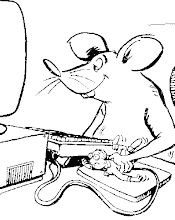If you look on the readily available data there was a long drawn out M on the 15 min but the 30 min was useless - consecutive red/green equally chunky candles got joined to form an almost doji. It was just a matter of finding the time setting needed - happened to be 34 min, which just happens to be a Fib. number......
Max RSI is above 65 and it's a faller. The Price action is fantastic, a double break up and back down again through the Upper Bollinger band.
So why is it a non-system trade? Because the risk was around 15 and so was the initial potential reward marked by the middle Bollinger line.
It's a much better than 50% prob. in terms of two of the criteria but even money on the other. If the market moves my way on opening then the Bollinger Bands will widen......, I risked a half trade.

I've also drawn on the bases of the four Ws mentioned in yesterday's post in red, they were on different time settings to this chart but that doesn't matter.Yesterday I traded the failure of the first chunk of three and lost a small amount.
My rationale for repeating the trade is along the following lines. There is such a collection of support levels clustered together that IF they get hit at speed, then there could well be a whole load of S/Ls being triggered, which feeds the fall....
Failed yesterday for a small loss, worked today for a big win, part of which is still running.
cheers theory

Thanks Theory
ReplyDeleteI saw this mornings trade on 15 min but was late. Thank you for showing the red lines and the failed w trades. You were persistent!!
The w (s) on 15 min rsi from 09.15 failed. will you now trade these short?
Cheers
Zac
Zac,
ReplyDeleteThere are 3 criteria that MUST be met before a WM becomes a "failed WM etc...."
Forms on RSI - obvious
Forms on Price - sensible
Delivers "reasonable profit" and then reverses.
The failure occurs at just below the original shape on PRICE.
cheers theory